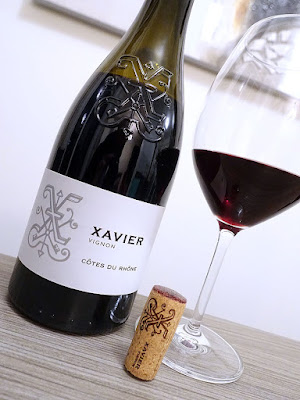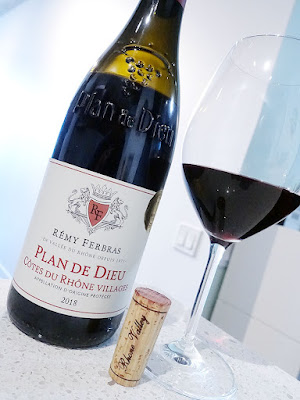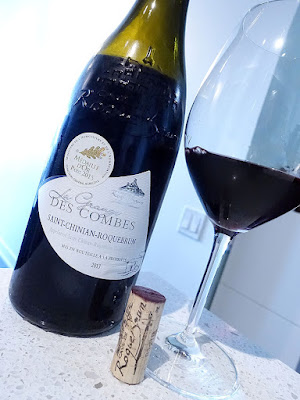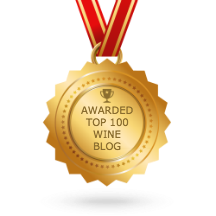red wine reviews are a pair of lovely cru wines from the Southern Rhône Valley that arrived in LCBO VINTAGES recently. The Rasteau returned to VINTAGES on , while the Vinsobres made its debut as the Wine of the Month in the LCBO VINTAGES New Release Collection, and both are widely available at LCBO outlets across Ontario.
These red wines are produced by Rhonéa, a co-operative winery with deep roots in the Rhône Valley. It all began in the Provençal village of Rasteau in 1925, where singing cicadas and the scent of garrigue filled the air. During this time of economic certainty, a group of visionary and historic winegrowers joined forces to form a co-operative in order to showcase their land and wines. Despite the challenges, the co-operative adapted, grew, and thrived under the guidance of various presidents and directors, while also embracing innovation. The quality and dedication of the village eventually led to Rasteau being officially recognized as a Cru of the Rhône Valley in 2010.
Today, Rhonéa is made up of over 400 families of Artisan Winegrowers who have over a combined 2,900 hectares of vineyards stretching from the southeast of the Rhône to the north of the Vaucluse department. Situated across a diverse range of Rhône terroirs, these vineyards have been cultivated by winegrowing families for 3 or more generations.
In 2025, Rhonéa is celebrating 100 years of history, tradition, and shared dreams. To mark this special occasion, Rhonéa's oenologist carefully crafted the exclusive Centenary Cuvée, a blend of predominantly Grenache that is a testament to the co-operative's century-old expertise and unwavering passion for its terroir. The 2025 centenary is more than just a milestone; it is a celebration of the co-operative's core values - solidarity, heritage, and a shared passion for the vine. As a true symbol of the village, the co-operative tells a collective story, where each winegrower is a vital part of a century-long legacy of success. The co-operative is also focused on a sustainable future with their growth of local and sustainable winegrowing, as well as putting social responsibility and environmental protection at the heart of their project.
Both 2021 and 2022 were challenging vintages in the Southern Rhône Valley. In 2021 there was frost, hail, and rain, which reduced yields and created an uneven vintage. While 2021 will be remembered for being atypical, it will also be remembered for producing quality wines that are fresh, lush, and tasty. The 2022 growing season will be known for its heat and drought conditions. However, with the remarkable resilience of the vines and the dedication of the winegrowers and technical staff, the vintage promises wines of outstanding quality. Let's see how these two Southern Rhône Valley wines from the crus of Rasteau and Vinsobres are tasting tonight...
Blend of 60% Grenache, 20% Syrah, 15% Mourvèdre, and 5% Carignan that was grown on terraces of clay, limestone, and pebbles in the plains of Rasteau, as well as on hills facing the Dentelles de Montmirail at 200–250 metres above sea level that featured layers of blue marls. The grapes were manually harvested, sorted, and destemmed, and followed by traditional vinification with long maceration and partial punching down. Tasting now for the third time, the medium+ to medium-high intensity has a slightly perfumed nose wafting of savoury, earthy mineral aromas nuanced with black cherry, dark red cherry, raspberry, garrigue, and spice. On the dry, medium+ bodied palate it has delicious black cherry, raspberry, savoury earthy-stony minerals, garrigue, and spice flavours, plus hints of plum. It has fresh acidity, along with supple, refined, and gently textured tannins with good structure. Savoury and earthy minerals with touches of spice linger on the long, elegant, and juicy finish. In LCBO VINTAGES July 19th and a highly recommended buy! Score: 90 pts
RHONÉA LES CONFLUENCES VINSOBRES 2022 - AC, Rhône, France (#43748) (XD) - $24.95
This blend of 49% Grenache, 44% Syrah, and 7% Mourvèdre was grown on red marls soil on the "Eygues" plain, between 200–300 metres above sea level. The grapes were harvested at optimum maturity, fermented at a controlled temperature, vinified using traditional methods, and aged for 12 months in oak barrels. The medium-high intensity nose offers lovely spicy, savoury earth, and garrigue layers, alongside blackberry, black raspberry, ripe plum, and black pepper notes. On the dry, medium+ bodied palate it has delicious ripe black cherry, black raspberry, peppery spice, garrigue, red plum, and savoury, earthy mineral flavours supported by juicy, well-balanced acidity, and smooth, refined tannins with good structure and a touch of tannic grip. Black cherry, raspberry, and peppery spice notes give way to savoury and earthy minerals on the long, satisfying finish. Highly recommended buy! Score: 90 pts
Other lovely wines by Rhonéa can be ordered through their Agent - Noble Estates Wines & Spirits.
These red wines are produced by Rhonéa, a co-operative winery with deep roots in the Rhône Valley. It all began in the Provençal village of Rasteau in 1925, where singing cicadas and the scent of garrigue filled the air. During this time of economic certainty, a group of visionary and historic winegrowers joined forces to form a co-operative in order to showcase their land and wines. Despite the challenges, the co-operative adapted, grew, and thrived under the guidance of various presidents and directors, while also embracing innovation. The quality and dedication of the village eventually led to Rasteau being officially recognized as a Cru of the Rhône Valley in 2010.
Today, Rhonéa is made up of over 400 families of Artisan Winegrowers who have over a combined 2,900 hectares of vineyards stretching from the southeast of the Rhône to the north of the Vaucluse department. Situated across a diverse range of Rhône terroirs, these vineyards have been cultivated by winegrowing families for 3 or more generations.
In 2025, Rhonéa is celebrating 100 years of history, tradition, and shared dreams. To mark this special occasion, Rhonéa's oenologist carefully crafted the exclusive Centenary Cuvée, a blend of predominantly Grenache that is a testament to the co-operative's century-old expertise and unwavering passion for its terroir. The 2025 centenary is more than just a milestone; it is a celebration of the co-operative's core values - solidarity, heritage, and a shared passion for the vine. As a true symbol of the village, the co-operative tells a collective story, where each winegrower is a vital part of a century-long legacy of success. The co-operative is also focused on a sustainable future with their growth of local and sustainable winegrowing, as well as putting social responsibility and environmental protection at the heart of their project.
Both 2021 and 2022 were challenging vintages in the Southern Rhône Valley. In 2021 there was frost, hail, and rain, which reduced yields and created an uneven vintage. While 2021 will be remembered for being atypical, it will also be remembered for producing quality wines that are fresh, lush, and tasty. The 2022 growing season will be known for its heat and drought conditions. However, with the remarkable resilience of the vines and the dedication of the winegrowers and technical staff, the vintage promises wines of outstanding quality. Let's see how these two Southern Rhône Valley wines from the crus of Rasteau and Vinsobres are tasting tonight...
Tasting Notes:
RHONÉA TRADITION RASTEAU 2021 - AP, Rhône, France (#998716) (XD) - $19.95Blend of 60% Grenache, 20% Syrah, 15% Mourvèdre, and 5% Carignan that was grown on terraces of clay, limestone, and pebbles in the plains of Rasteau, as well as on hills facing the Dentelles de Montmirail at 200–250 metres above sea level that featured layers of blue marls. The grapes were manually harvested, sorted, and destemmed, and followed by traditional vinification with long maceration and partial punching down. Tasting now for the third time, the medium+ to medium-high intensity has a slightly perfumed nose wafting of savoury, earthy mineral aromas nuanced with black cherry, dark red cherry, raspberry, garrigue, and spice. On the dry, medium+ bodied palate it has delicious black cherry, raspberry, savoury earthy-stony minerals, garrigue, and spice flavours, plus hints of plum. It has fresh acidity, along with supple, refined, and gently textured tannins with good structure. Savoury and earthy minerals with touches of spice linger on the long, elegant, and juicy finish. In LCBO VINTAGES July 19th and a highly recommended buy! Score: 90 pts
RHONÉA LES CONFLUENCES VINSOBRES 2022 - AC, Rhône, France (#43748) (XD) - $24.95
This blend of 49% Grenache, 44% Syrah, and 7% Mourvèdre was grown on red marls soil on the "Eygues" plain, between 200–300 metres above sea level. The grapes were harvested at optimum maturity, fermented at a controlled temperature, vinified using traditional methods, and aged for 12 months in oak barrels. The medium-high intensity nose offers lovely spicy, savoury earth, and garrigue layers, alongside blackberry, black raspberry, ripe plum, and black pepper notes. On the dry, medium+ bodied palate it has delicious ripe black cherry, black raspberry, peppery spice, garrigue, red plum, and savoury, earthy mineral flavours supported by juicy, well-balanced acidity, and smooth, refined tannins with good structure and a touch of tannic grip. Black cherry, raspberry, and peppery spice notes give way to savoury and earthy minerals on the long, satisfying finish. Highly recommended buy! Score: 90 pts
Other lovely wines by Rhonéa can be ordered through their Agent - Noble Estates Wines & Spirits.



























